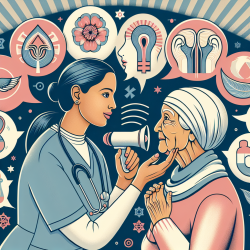The aging process brings about various changes in the human body, including the voice. For speech-language pathologists and voice therapists, understanding these changes is crucial to providing effective care. The research article "Characteristics of the Aging Female Voice" by Tanya L. Eadie offers valuable insights into the normal aging female voice, highlighting the importance of distinguishing between age-related changes and voice disorders.
Understanding the Aging Female Voice
The study reviews literature on the anatomical and physiological changes that occur in the female larynx with aging. These changes affect voice production, influencing the respiratory and supralaryngeal systems. Specifically, the research focuses on changes to cartilage, soft tissue, muscular structures, and neural innervation of the larynx. Understanding these changes is key to early recognition of age-related voice problems, potentially improving the quality of life for those seeking treatment.
Implications for Practice
For practitioners, this research underscores the need for a nuanced approach to diagnosing and treating voice changes in aging females. It's essential to differentiate between changes due to normal aging and those stemming from pathological conditions. This distinction can guide the development of more targeted therapy strategies, promoting vocal health and effective communication among aging populations.
Key Takeaways:
- Age-related changes in the female voice include alterations in the respiratory and supralaryngeal systems, affecting voice production.
- Understanding these changes can aid in the early recognition of voice problems, distinguishing between normal aging effects and pathological conditions.
- Speech-language pathologists can tailor therapy strategies to address the specific needs of aging females, enhancing vocal health and communication.
This research highlights the importance of further studies to explore the perceptual features of the aging female voice. By establishing a comprehensive understanding of age-related voice changes, practitioners can better serve the aging female population, ensuring effective therapy outcomes and improved quality of life.
To read the original research paper, please follow this link: Characteristics of the Aging Female Voice.










